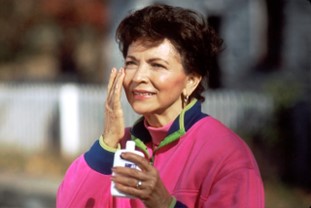First Choice Health Care in Galax, VA offers a broad spectrum of acute, primary, and specialized care services, often working independently or alongside physicians. As healthcare professionals, they understand the importance of sun protection and prioritize educating their patients about the significance of SPF and proper sunscreen usage to prevent sunburn, reduce the risk of skin cancer, and promote overall skin health. In the following article, First Choice Health Care demystifies sunscreen labels, explains the effects of sun exposure, and helps individuals choose the right products for their needs.
When warm weather arrives, many of us rush to the store to stock up on sunscreen, eager to protect our skin from the intense UV rays. Yet, even after years of buying and using these products, many people remain unclear about what SPF actually means and how it works. Understanding SPF product labels is crucial for effective skin protection and can significantly reduce the risks associated with sun exposure.
First Choice Health Care on Sun Protection Factors
SPF, or Sun Protection Factor, is a measure of how well a sunscreen will protect against damaging solar rays, which are primarily responsible for sunburn and contribute to skin cancer and premature aging. The number associated with SPF indicates how long you can stay in the sun before your skin starts to burn compared to not using sunscreen. For example, SPF 30 means you can stay in the sun 30 times longer without getting sunburned than if you were not wearing sunscreen at all.
SPF Ratings
SPF 30 is generally recommended for daily use, providing about 97% protection against UVB rays. SPF 50 increases protection to 98%, while higher SPF numbers offer diminishing returns. It’s important to remember that no sunscreen can offer 100% protection, and high SPF numbers don’t mean you can stay in the sun indefinitely.
SPF numbers can be misleading without understanding their broader context. Many people mistakenly believe that an SPF 50 is twice as protective as SPF 25, but the relationship isn’t linear. SPF 30 blocks about 97% of UVB rays, while SPF 50 blocks about 98%, illustrating that the increase in protection is marginal despite the significant jump in numbers. This misconception can lead people to feel overly confident in their sunscreen, risking prolonged sun exposure without reapplying or utilizing other protective measures like wearing a hat or seeking shade.
Broad-Spectrum Protection
The professionals at First Choice Health Care also note that it’s important to recognize that SPF does not measure protection from UVA rays, which penetrate the skin more deeply and contribute to photoaging and potentially skin cancer. That’s why it’s crucial to look for “broad spectrum” on sunscreen labels, indicating the product provides protection against both UVB and UVA rays. Sunscreens with only UVB protection might prevent sunburn, but they won’t necessarily prevent the long-term damage caused by UVA rays.
 Water Resistance
Water Resistance
If you plan to swim or engage in activities that cause sweating, choose a sunscreen labeled “water-resistant.” However, these labels do not mean that the sunscreen will stay on indefinitely while swimming or sweating; they only indicate that the product will remain effective for a specific duration, usually 40 or 80 minutes, before it needs reapplication. This underscores the need to reapply sunscreen regularly, especially after swimming, sweating, or towel-drying.
Application and Reapplication
To ensure effective protection, the First Choice Health Care experts recommend applying sunscreen liberally at least 15 minutes before sun exposure and reapplying every two hours or immediately after swimming or sweating heavily. Additionally, sunscreen should be used in conjunction with other protective measures like wearing sunglasses, hats, and protective clothing, and seeking shade during peak sun hours.
Given the variety of options available, it’s also important to choose the right product for your skin type and activity level. Those with sensitive skin should opt for products with physical blockers like zinc oxide or titanium dioxide, which are less likely to cause irritation. For athletes or those engaged in intense outdoor activities, water-resistant sunscreens may be more suitable.
Understanding SPF labels can seem complex, but with the right knowledge, you can significantly reduce the risks associated with sun exposure. By selecting the appropriate SPF, choosing broad-spectrum protection, and reapplying regularly, you can enjoy the outdoors while safeguarding your skin from harmful UV rays. Remember, effective sun protection is a year-round commitment, not just a seasonal trend, and should be an essential part of your daily skincare routine.
The Effects of Sun Exposure
Sun exposure has both short-term and long-term effects on the skin. First Choice Health Care in Galax, VA says that while moderate sun exposure can be beneficial for vitamin D production, excessive exposure can lead to serious health risks.
Short-Term Effects
- Sunburn: This is the most immediate effect of overexposure to UVB rays. It causes redness, pain, swelling, and, in severe cases, blisters and peeling.
- Tanning: Tanning occurs when the skin produces more melanin in response to UV exposure. While some people associate tanning with a healthy glow, it’s actually a sign of skin damage.
 Long-Term Effects
Long-Term Effects
- Skin Aging: UV exposure accelerates the aging process, leading to wrinkles, fine lines, and age spots. This is known as photoaging.
- Skin Cancer: Prolonged exposure to UV rays increases the risk of developing skin cancers such as basal cell carcinoma, squamous cell carcinoma, and melanoma.
- DNA Damage: UV rays can cause mutations in skin cell DNA, leading to long-term skin damage and cancer risk.
Final Recommendations
In conclusion, understanding SPF and sunscreen labels is essential to safeguard your skin from the harmful effects of sun exposure. First Choice Health Care in Galax, VA emphasizes the importance of choosing the right sunscreen with an appropriate SPF rating, broad-spectrum protection, and water resistance, as well as adopting other protective measures like wearing hats, sunglasses, and protective clothing.
By prioritizing sun protection and adopting a year-round commitment to skin health, you can enjoy outdoor activities with confidence, knowing you’re taking the necessary steps to protect your skin. So, the next time you head outdoors, remember to apply sunscreen, wear protective clothing, and stay in the shade whenever possible. Your skin will thank you for it.








